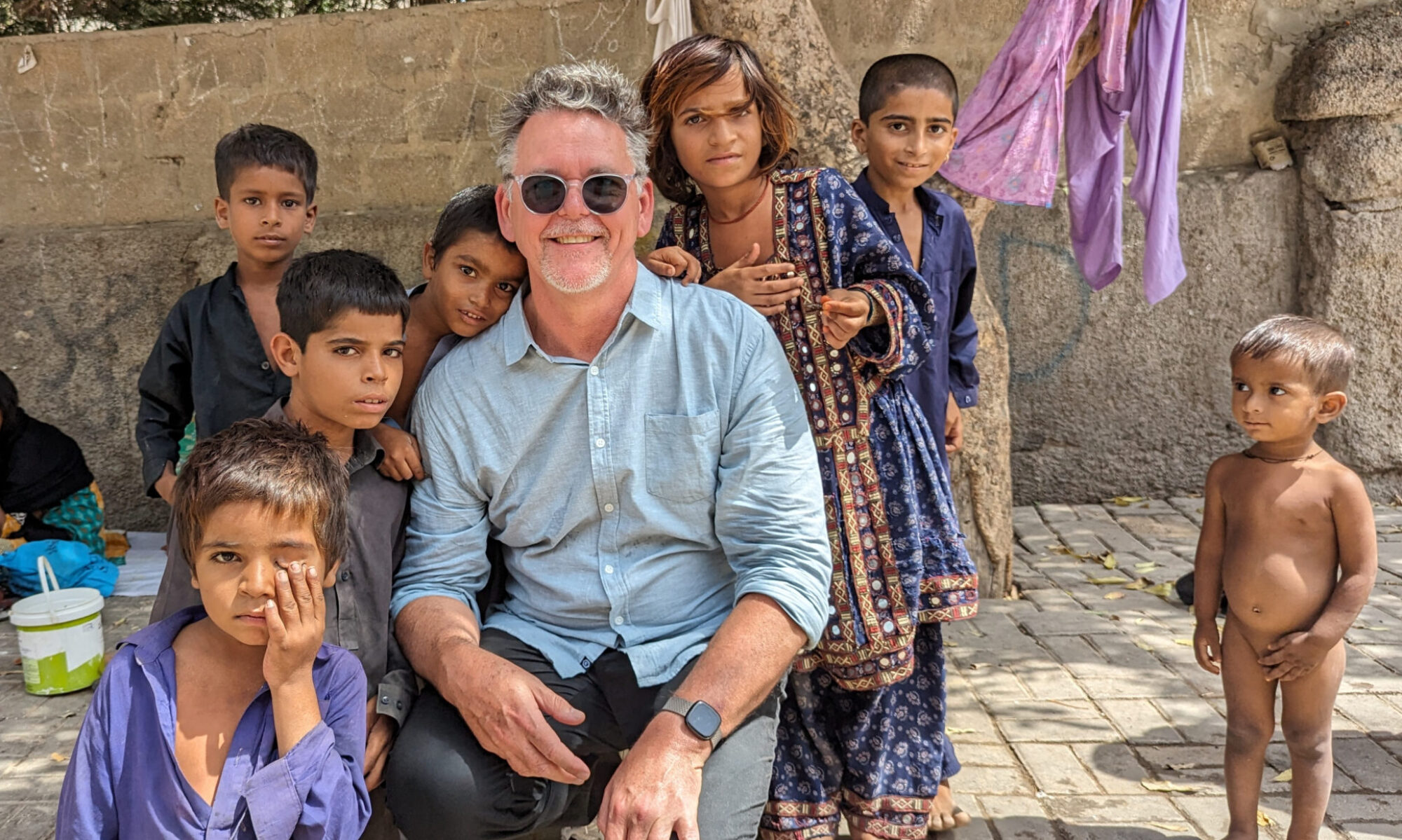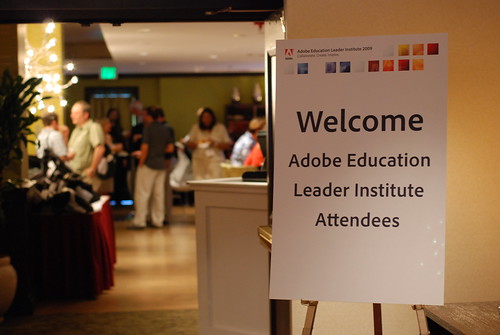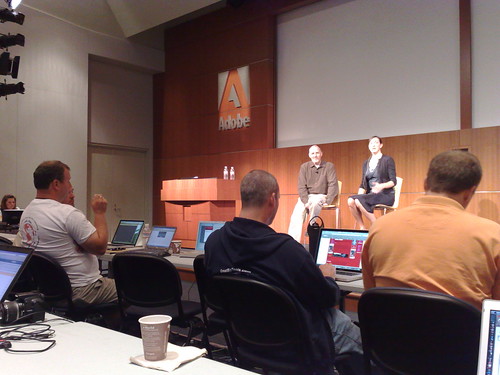I guess many readers of this blog would know that I work as an ICT Integrator at a large independent girls’ school in Sydney. Large chunks of my day are spent working with our teachers and our students to help them understand a little more about technology and how it might be used to make teaching and learning more engaging and effective. Of course, teachers always seem to be very busy, and one of the difficulties in trying to deliver some form of ongoing PD is simply getting them to find the time to do so. I’ve tried a number of different models for delivering PD; some work quite well, others not so much. It usually comes down to finding time, and making it meaningful.
In case it’s of any use to you, I thought I’d share an email that I sent to all the teachers in our junior school (R-6) yesterday. It’s an outline of how I plan to be delivering ICT professional development to them next term. I’ve found that this model seems to work best for our staff, and it seems to give the most effective results. I think this is because it’s delivered in a real situation that is authentic to them and also places a good deal of responsibility onto the staff to embrace the use of ICTs for themselves. (one of my beliefs is that you should never do for somebody what they can, and should, be able to do for themselves) Perhaps most importantly, our teachers seem to like this PD model and they seem quite enthusiastic about what we’re doing together… so this is what I said to them…
Dear teachers,
Although the focus of what I do here at PLC is technology integration, it has always worked so much better when you allow me to help you link this technology integration directly into the things you plan to teach as part of your day to day activities… in this way, the use of technology can richly support and extend the learning for the students. Over the past couple of years I feel that we have all worked together to make technology less of an “add-on” to the curriculum, and it has become more of an embedded tool for helping engage and enrich our students. Together, some of the techniques and strategies we have tried in the Junior School over the past few years includes podcasting, blogging, live webcasting, digital mapping, digital storytelling, web 2.0 tools, video news reports, social networking, manipulating digital images, and so on. In the process, your students have come into contact with a wide range of technology tools that are an increasingly important part of the world in which they live.
In working with the Junior School staff, I have tried a number of different models for providing professional development in these tools, from offering before and after school workshops, holding lunchtime sharing sessions, shared planning time, and so on. With the incredibly hectic schedules that most of you have, some of these PD models have been more successful than others.
Starting in Semester 2, all staff will be required to undertake specific ICT professional development each semester. In the Junior School, we all agree that the best way to deliver this PD to you is in your actual classroom situation.
The most successful PD model for our teachers seems to be when we create time for collaborative planning time with the ICT Integrator. Under this PD model, I meet with each year group three times per term in order to plan and facilitate the integration of ICT into a classroom project. We meet early in the term to plan a unit of work together, meet again midterm to monitor the progress of that work, and again at the end to evaluate and assess the work. Of course, if you need extra assistance with delivering an ICT project then I am more than happy to come into your classes and assist, or to help out with computer class time, but I feel that the core of my ICT integration support is best done by assisting you to develop the skills and knowledge you need to deliver your own classwork with a rich ICT component. The recent Year 2 “Great Inventions” project is a good example of how I see this working.
Starting in Term 3, we will resume this PD planning model that we’ve used before as it seems to prove the most successful with Junior School teachers. After looking at the Junior School timetable, I’ve listed some suggested dates below that we could use for meetings in weeks 2B, 5A and 8B of next term. These all take advantage of times when specialist teachers have your students. Please take a look and let me know ASAP if there are problems with any of these dates and offer some alternate dates that are more suitable for you in these weeks.
(I’ve removed the actual dates listed here, as they aren’t relevant to anyone reading this post…)
Ideally, in our first meeting (Week 2B) we will look at a task or theme or topic you plan to teach that ICT might lend itself to, and then we can come up with a plan for how we might integrate ICT into that unit. We will look at modifying or creating activities for the students that leverage ICT skills, and if necessary learn those skills ourselves. I would encourage you to think about how we can make the tasks we design highly student centric, providing your students with higher order thinking skills and open ended opportunities for creative thinking.
Our second meeting (Week 5A) will be to follow through on how the project is going, what can be improved, what can be tweaked, and also to ensure that any ICT skills are being delivered to both you and the students.
Our final meeting (Week 8B) will be used to evaluate and wrap up the project. We can evaluate it, look at what worked well, and work out how we might modify it to use (or not use) next year.
Hope these dates suit you. Looking forward to working closely with you all next term.
We’ve used this PD delivery model in the past and it seems to work quite well. I start by checking out the teachers’ timetables and working out when they are free (mostly when their students are with specialist teachers for Music/PE/Languages/etc) and then I propose a list of times to meet, asking them to check and confirm that these times work for them.
Anyway, just thought I’d share that in case you can make use of it. My next few posts will be sharing some examples of how we have made this work in various classes.


 I’m finally back home from a fantastic week in San Jose at the
I’m finally back home from a fantastic week in San Jose at the  Tuesday started early for me with a Photoshop exam. This was taken as part of the
Tuesday started early for me with a Photoshop exam. This was taken as part of the  Thursday was another full day of learning, with a intense session run by Adobe’s
Thursday was another full day of learning, with a intense session run by Adobe’s  The rest of Friday morning was a general wrap up of the event, with feedback and a debriefing session between the AELs and the Adobe folk. It was kind of sad to have it all come to an end, but we eventually said our goodbyes and all went our separate ways. The sessions were all recorded with Adobe Connect, as well as a ton of
The rest of Friday morning was a general wrap up of the event, with feedback and a debriefing session between the AELs and the Adobe folk. It was kind of sad to have it all come to an end, but we eventually said our goodbyes and all went our separate ways. The sessions were all recorded with Adobe Connect, as well as a ton of